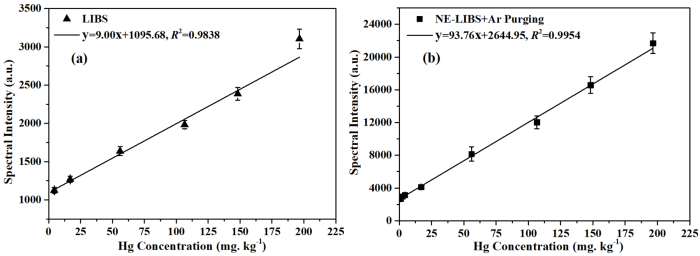A research team from Shanghai Institute of Optics and Fine Mechanics (SIOM), Chinese Academy of Sciences (CAS) proposed an efficient method to improve the LIBS detection sensitivity of mercury in medicinal herbs. The related research results have been published in Journal of Analytical Atomic Spectrometry on January 01, 2023.
Laser-induced breakdown spectroscopy (LIBS) is an atomic spectrum analysis method with the advantages of simple, rapid, and multi-element analysis. When LIBS is used to analyze mercury, the high recombination rate of mercury plasma and the selectively quenching of mercury atomic emission line by oxygen will reduce the analytical sensitivity.
In this work, researchers used nanoparticle-enhanced LIBS (NE-LIBS) combined with argon (Ar) purging to improve the analytical sensitivity of mercury in the medicinal herbs. The laser pulse irradiating the nanoparticles (NPs) can induce the oscillation of the conduction electrons in the NPs, resulting in an enhancement of the local electric field near the NPs that increases the incident laser pulse energy. And the resonance between the laser pulse and the surface plasmon of the NPs causes the NPs to absorb most of the laser energy and efficient heating the surrounding area that increases the LIBS signal intensity.
The deposition of NPs was optimized by surface superhydrophobic treatment of the sample. The effects of the size, shape, and surface concentration of the NPs on the LIBS signal intensity were analyzed. The results showed that detection stability was improved by surface superhydrophobic treatment. The spectral intensity of Hg I 253.65 nm was increased 6.19 times under the optimized parameters. Compared with traditional LIBS methods, the NE-LIBS combined Ar purging improved the analytical sensitivity of Hg in medicinal herbs, with the LoD improved by 9.73 times.
The proposed method is simple and efficient. It can be widely used to detect heavy metals in medicinal herbs, vegetables and crops.

Fig. 1 Schematic diagram of the NE-LIBS combined with Ar purging. (Image by SIOM)

Fig. 2 The emission spectra of LIBS and NE-LIBS combined with Ar jet purging. (Image by SIOM)

Fig. 3 Calibration curves of (a) LIBS, and (b) NE-LIBS combined with Ar purging. (Image by SIOM)
Article website:
https://doi.org/10.1039/D2JA00278G
Contact:
WU Xiufeng
General Administrative Office
Shanghai Institute of Optics and Fine Mechanics, CAS
Email: xfwu@siom.ac.cn
Web: http://english.siom.cas.cn/